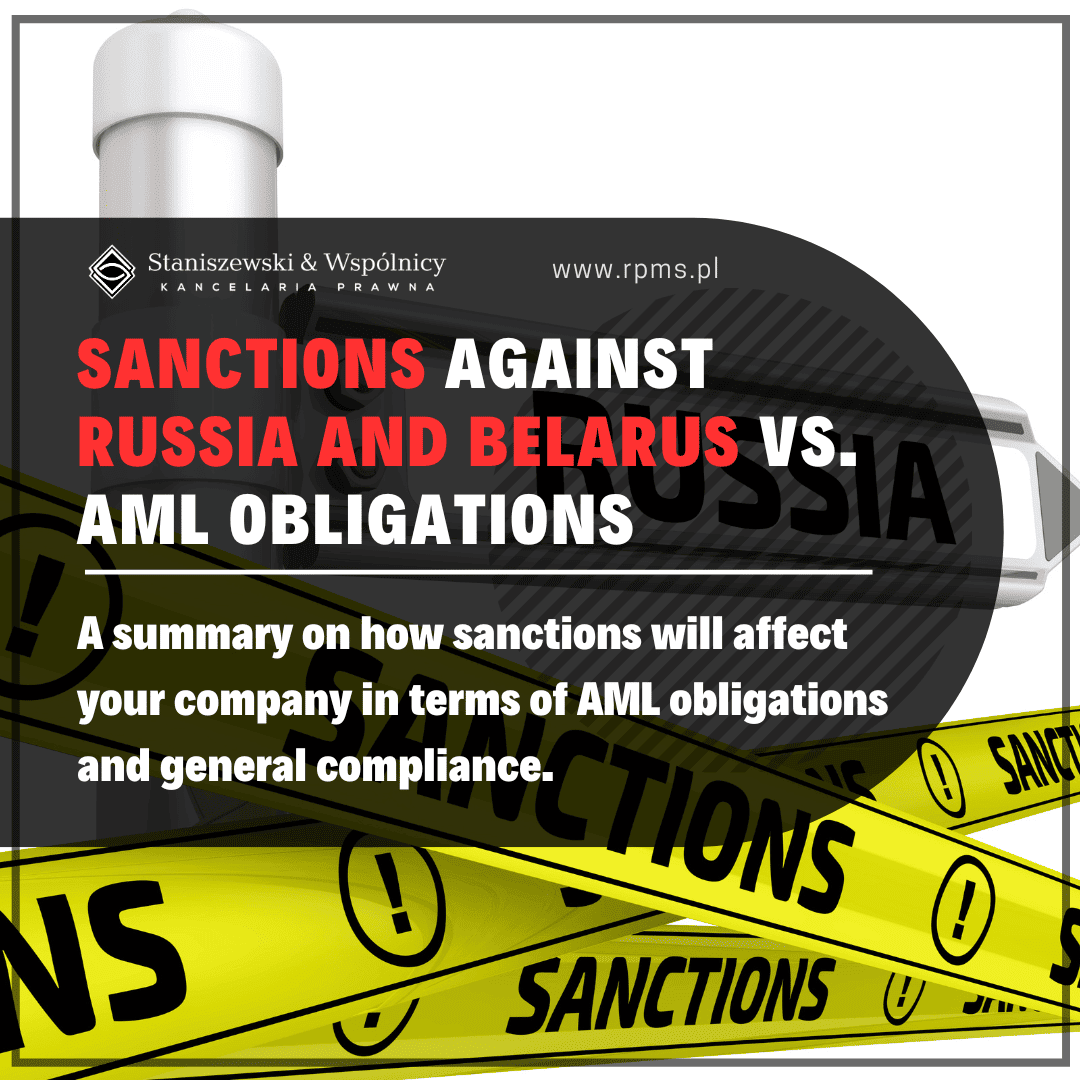Table of contents
A partner withdrawing from a partnership is entitled to receive a repayment of their share. In cases where the partnership agreement does not specify a distinct procedure, recourse should be made to statutory solutions. What is the repayment of a share in a general partnership and limited liability partnership (LLP), and how is it taxed?
How can a partner withdraw from a partnership in Poland?

Current regulations provide two methods for a partner’s withdrawal from a partnership. The first one, less problematic, is simply selling the rights and obligations and transferring them to another person. However, according to Article 10 of the Code of Commercial Companies and Partnerships (hereinafter as referred to as ‘k.s.h.’), the rights and obligations of a partner in a partnership can only be transferred to another person with the written consent of all other partners. Without such consent, it will be necessary to terminate the partnership agreement under Article 61 of the k.s.h. by the withdrawing partner.
- In the case of agreements concluded for an indefinite period of time, a partner may terminate the partnership deed 6 months before the end of a financial year. Therefore, if the financial year coincides with the calendar year, the statement must be submitted by the end of June. The 6-month period may be shortened in the partnership agreement.
- In the case of agreements concluded for a specified period, they may be terminated if a reason allowing for such termination arises.
In both cases, the statement of termination of the partnership agreement must be prepared in writing and submitted to all remaining partners or those authorized to represent the partnership. The regulations concerning general partnerships should be applied, for the most part, according to limited liability partnerships based on Article 103(1) of the k.s.h.
Share in a general partnership
The concept of a share in a partnership has several meanings. However, it should never be equated with a share in a limited liability partnership (sp. z o.o.).
- Firstly, a share is a set of rights and obligations arising from participation in a partnership.
- Secondly, it determines the degree of participation in the profits and losses of the partnership.
- Thirdly, a capital share may refer to a specific book value expressed in money and recorded in the partner’s account in the commercial books.
- Fourthly, the partner’s share paid to them under Article 65 of the k.s.h. in the event of withdrawal from the partnership.
To settle with a withdrawing partner, the concept of a capital share primarily refers to the last specification.

Repayment of a partnership’s share

A partner’s capital share in the partnership’s assets is determined by the contributions of individual partners (founders’ contributions). In exchange for their contributions, each partner receives a share and specific rights related to their participation in the partnership.
When a partner withdraws from a partnership, they should settle their share with the remaining partners based on Article 65 of the k.s.h. The value of the capital share is determined based on a balance sheet that defines the fair value of the partnership’s assets. It’s important to note that this balance sheet is not a liquidation balance sheet.
The value of individual assets is estimated considering the fair market value of the partnership’s assets, not their book value. The law does not define valuation methods, so it is advisable to consult with lawyers experienced in corporate matters.
In the event of termination of the agreement under Article 65(2)(1) of the k.s.h., the balance sheet date is set as the last day of the financial year when the notice of termination expires. In the case of:
- Death or declaration of bankruptcy – the balance sheet date will be the day of death or bankruptcy, respectively.
- Exclusion of a partner by a final court judgment – the balance sheet date will be the day the lawsuit is filed.
The partner’s share is typically paid in cash unless it includes items provided solely for use. These items are returned in kind in their condition at the time of return. The partnership is not responsible for everyday wear and tear. For example, if a partner provided a car to the partnership for use, typical wear and tear would not give rise to claims for reimbursement of the share, but damage resulting from an accident would.
In a ruling dated April 6, 2017, the Court of Appeal in Białystok (case no. I ACa 341/16) emphasized that when valuing a share, not only the value of tangible assets (e.g., machinery, IT equipment) should be considered but also intangible assets, including:
- The market value of rights belonging to the partnership (e.g., trademark rights).
- The partnership’s reputation.
- Location.
- Leading customer segments.
- Reciprocal receivables between the partner and the partnership.
With time, the value of the capital share should be reassessed. It may be lower or higher than the initial value, depending on its relation to the partnership’s assets value.
The legislator did not specify what the partnership should do when the value of the share increases. However, based on the principle of equality of rights and obligations, it can be assumed that the increase or decrease in the share should be proportionate to the percentage of the partner’s initial capital share in the total value of the shares. For example, if the total value of the shares was 100,000 PLN, and the partner’s share was 10%, i.e., 10,000 PLN, then an increase in value to 200,000 PLN should result in an increased share of 20,000 PLN.
Share in future events
According to Article 65(5) of the k.s.h., a withdrawing partner or their heir will still participate in the profit and loss of ongoing matters (future events). Although they have no influence on their management, they can still demand information, accounts, and the division of profit and loss at the end of the financial year.
This means that, depending on the financial results of business activities, the withdrawing partner may experience a financial gain or loss.
Attention is also paid (vide: judgment of the Court of Appeal in Warsaw dated March 8, 2013, case no. VI ACa 123/12) to the possibility of the withdrawing partner making a claim against the partnership for profit settlement, regardless of whether they participated in or had an influence on the matter’s outcome. However, it is a prerequisite to demonstrate a causal link between the profit obtained and the ongoing matter (thus, the profit essentially has an indirect dimension).

Takeover of a partnership by a partner under Article 66 of the Code of Commercial Companies and Partnerships

The provisions of the k.s.h. allow for the possibility of one partner taking over a partnership’s assets through a court order if there is a reason to dissolve the partnership. The partner acquiring the assets must settle with the partner “leaving” the partnership in the same way as in the case of termination of the agreement by one of the shareholders.
It’s worth noting that the settlement here is based on the so-called fair market value, which is defined in doctrine as the ‘price achievable on the market’.
As an interesting fact, attention should be drawn to the resolution of the Supreme Court dated March 13, 2008 (case no. III CZP 9/08), which indicated that in the case of transforming a civil partnership into a general partnership and covering the contribution with funds from the non-participating spouse (transferred to the partner entering the general partnership), the non-participating spouse who provided the funds is entitled to a claim for contribution settlement under Article 65 of the k.s.h. (analogous to the case of general partners).
Taxation of the payment of a share
The answer to the question of taxation of a partner’s share payment in a partnership can be found in the Personal Income Tax (PIT) Act. According to Article 14(2)(17)(b) of the PIT Act, income from non-agricultural economic activity also includes income from the disposal of assets received in connection with the liquidation of a non-legal person partnership, the withdrawal of a partner from such a partnership, or a reduction in the capital share in such a partnership, with the exception of assets that are:
- Shares (stocks).
- Securities.
- Participation units in capital funds.
- Derivative financial instruments.
- Assets for which the Republic of Poland loses the right to tax income from their disposal.
According to Article 14(3)(10) and (11) of the PIT Act, money received by a partner of a non-legal person partnership due to the liquidation of the partnership or withdrawal from the partnership is not considered income from non-agricultural economic activity.
It might seem that the partner’s payment can remain untaxed.

Taxation of the contribution payment return from the withdrawing partner’s perspective

Tax authorities maintain that the partner’s payment cannot be considered liquidated (hence exempt from income tax). The Director of the National Revenue Administration (KIS) stated in an individual interpretation dated May 7, 2021 (case no. 0115-KDIT3.4011.103.2021.4.AW) that the payment of the share is related to the partner’s participation in the partnership and should be treated as a paid transfer. For the withdrawing partner, it is considered a source of income under Article 10(1)(3) of the PIT Act. However, income can be recognized only when the partner receives more funds than they initially contributed to the partnership.
In the case of paying the share in installments, the tax obligation arises only when payment exceeds the total amount of the contribution, the amount due for the capital share, and the amount taxed in the previous tax year (see: interpretation of the Director of IS in Warsaw dated May 14, 2012, case no. IPPB1/415-233/12-2/KS). The return of the share up to the value of the contribution is not subject to taxation.
The same applies to the return of the share in kind. There is no tax obligation because the partner receives back only what they contributed to the partnership without any gain.
This position was also taken by the Supreme Administrative Court (NSA) in its judgment dated September 5, 2019 (case no. II FSK 2954/17). Therefore, it can be said that the gain, and consequently the tax obligation, arises only from the surplus over the contribution.
Repayment of a partnership’s share vs a partner’s income and taxation
The repayment of a capital share and a partner’s income taxation in a general partnership can occur through the transfer of a specific amount of monetary funds or in a non-monetary form. In each of these cases, the taxation of the transaction varies.
Capital payment of a share
For taxation purposes, when a cash payment is made as part of a capital share repayment, the amount subject to tax is the difference between the revenues and the costs incurred when the partner was part of the partnership. The result should be reduced by the amount corresponding to the share and expenses that do not constitute income-generating costs.
From this calculated value, you must calculate an advance payment of income tax and include it in the PIT36 or 36L tax return if the former partner continues to engage in economic activity (see: individual interpretation by the Director of the Tax Chamber in Bydgoszcz dated April 16, 2014, No. ITPB1/415-54/14/MP).
If a person no longer conducts economic activity, the income tax should be settled like in the year of leaving the partnership. In the case of a cash capital share repayment, a tax obligation arises in any case.
Non-monetary capital repayment
When a capital share repayment is made through the transfer of non-monetary assets (e.g., a car, industrial machinery, real estate), this does not result in income from economic activity. According to current regulations, taxation of in-kind repayment will only occur in the following situations:
- When the received assets are disposed of in connection with conducting economic activity.
- When the asset is disposed of within 6 years from the 1st day of the month following the month of leaving the partnership.
To avoid taxation of a transaction initiated by the transfer of assets in kind, the former partner can, for example, delay the transaction (e.g., if leaving the partnership occurred at the end of December 2020, the tax-free transfer will be possible from January 1, 2026). Until that time, the former partner can use the received assets.
In the event of taxation, the tax, based on Article 24(3d) of the PIT Act, is paid on the difference between the income from the sale and the expenses incurred for the acquisition or production of the asset, which were not considered income-generating costs by the partnership or the partner.

Taxation of the payment from the perspective of other partners

For the partners who repaid the withdrawing partner, a tax liability arises under the Act on Civil-Law Transactions if the repayment was made from private funds (not from the partnership’s assets).
According to Article 1(3)(1) of the Act on Civil-Law Transactions, changing the partnership agreement includes, among other things, additional payments or the transfer of money to the partnership for free use or by lending (these methods can be used for repaying a partner).
According to Article 6(1)(8)(e) in connection with Article 7(1)(9) of the Act on Civil-Law Transactions:
- The basis for taxation for unrestricted use is the annual value of free use, which is considered 4% of the value of the item or right.
- The tax rate is 0.5%.
The repayment does not generate a tax obligation under PIT for the partners who remain in the partnership (see: individual interpretation by the Director of the National Revenue Administration (KIS) dated July 17, 2020, No. 0115-KDIT3.4011.320.2020.4.KR).
Optimizing the process of a partner leaving a partnership is not a simple task and requires consideration of numerous legal provisions, including the Commercial partnerships Code, the Personal Income Tax Act, and the Act on Civil-Law Transactions. To find the optimal solution for your situation, it is advisable to seek advice from specialists with experience in applying tax law norms.
Questions and answers
In jurisprudence, the date of performance is indicated as the date of the final exclusion of the partner (see: judgment of the Supreme Court dated January 20, 2017, file No. I CSK 13/16). The deadline is different in the case of a partner’s termination of the agreement. The obligation to pay the share’s value arises when preparing the balance sheet and becomes due when the partnership requests payment (see: judgment of the Supreme Court dated June 14, 2018, File No. V CSK 514/17).
A negative share arises when, for example, a partner receives advances against future profits greater than the amount of their capital share (see: judgment of the Supreme Court dated March 5, 2009, File No. III CSK 290/08).














